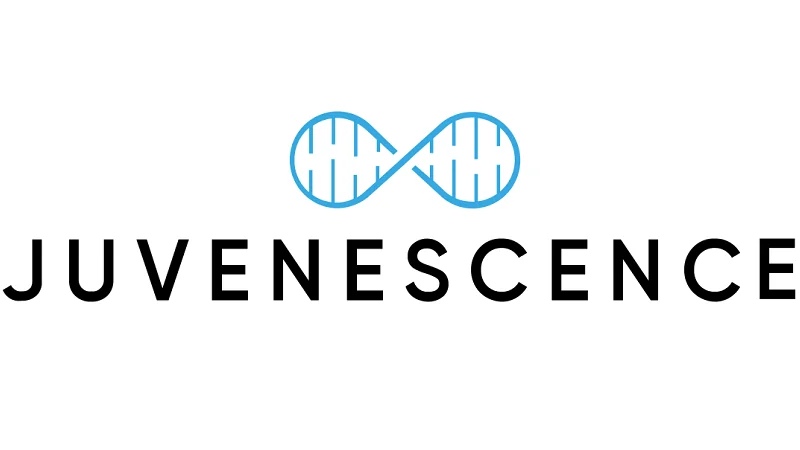
Organization Description
Juvenescence is a biotech longevity company aiming to tackle aging and age-related diseases. It identifies three pillars that make up its founding philosophy. First, it aims to understand the science behind regeneration, working towards a world in which the human body can be stimulated to regenerate tissues and organs. Second, it intends to re-envision healthcare practice, moving away from conventional sickness-based treatment to the prevention of age-related diseases before they become problems. Third, it intends to make clinically-validated supplements and other therapies available to the public, democratizing healthcare and directly informing the public through social media.
The well-known investor Jim Mellon is the chairman of Juvenescence, and he is supported by cofounder and chief executive officer Dr. Greg Bailey, M.D., along with CMO Dr. Steve Felstead, MBChB and Dr. Gillian Dines as the chief science officer. The company shares the same name as a book by Jim Mellon and Al Chalabi, and the same philosophies that show up in the book also appear in the company literature. Juvenescence names the Buck Institute, the University of Pittsburgh, and Genomics England as its primary research partners.
In May 2025, Juvenescence announced that they had closed the first $76m tranche of Series B-1 financing led by Abu Dhabi’s M42, with followon investments from existing investors. Juvenescence and M42 are said to be forming a strategic partnership for AI-enabled drug discovery centered in M42’s home country. “Juvenescence aims to complete the financing in Q3 2025 to advance clinical pipeline targeting age-related diseases.” In June, they announced thatthey had acquired AI drug discovery company Ro5 Inc to enhance their capabilities in this space.
Juvenescence is organized into four divisions:
JuvRX focuses on prescription medications to treat the diseases of aging. Juvenescence aims to work with drug developers to target aging at its most fundamental pathways, thus developing therapies that treat aging at its source. For this endeavor, Juvenescence has partnered with BYOMass, FoxBio, Napa Therapeutics, and Souvien Therapeutics.
JuvLife focuses on diet, aiming to create patented foods that are scientifically validated to be effective in affecting the onset of age-related conditions. Juvenescence has partnered with BHB Therapeutics to achieve this goal.
JuvDataScience aims to use machine learning and artificial intelligence in order to repurpose existing drugs, identify synergies of currently prescribed drugs, and discover new drug targets to facilitate the development of therapies. Its partners in this space include Insilico Medicine, Juvenomics, and Relation Therapeutics.
JuvRegeneration focuses on regeneration of tissues and the use of gene therapies to edit human biology. To this end, Juvenescence has partnered with AgeX Therapeutics, LyGenesis, and Morphoceuticals.
Juvenescence is currently marketing Metabolic Switch, a ketone di-ester product that raises bodily ketones in order to induce ketosis. The company claims that this product supports metabolic health, immune system function, mental acuity, healthy blood sugar, sustained energy, and muscle health, although only a pharmacodynamic study has been reported. Juvenescence also discusses the consumption of a ketosis-inducing diet in order to facilitate weight loss and improve metabolism.
Juvenescence also heavily discusses metabolism, health, diet, and related topics on its website, including brain aging, research news, data-driven science, tissue regeneration, and information about the Hallmarks of Aging.
Ketone Rx
This is said to be an oral exogenous ketone and listed as in Phase 0 development for heart failure. It is unclear if this is a different molecule from the ketone di-ester in Metabolic Switch.
Anti-GDF-15 Monoclonal Antibody
This unnamed candidate is described as a mAb but also charcterized as “Novel biologics and small molecules targeting GDF [sic] axis to restore youthful cell signaling.” The intended indication is muscle wasting, with which the therapeutic connection to the target is unclear. It is said to be in IND-enabling studies. In partnership with BYOmass.
CD38 Inhibitor
This unnamed candidate is described as an oral small molecule inhibitor of CD38, intended to reverse inflammation, with the go-to-market indication of rheumatoid arthritis. CD38 is a glycoprotein found on the surface of many immune cells, especially plasma B cells. CD38 can function either as a receptor or as an enzyme. As a receptor, CD38 can activate T-cells and modulate the activation of B-cells; as an enzyme, it can hydrolyze NAD+ into ADP ribose and cyclic ADPR. This NAD hydrolase activity is thought to contribute substantially to an age-related decline in NAD+ levels, although whether the latter is a meaningful problem in aging humans is uncertain.
Plasmalogen Precursor
This unnamed candidate is said to be a brain-penetrant plasmalogen precursor, and is intended to treat Alzheimer’s disease (AD). Plasmalogens are a class of glycerophospholipids, levels of which have (inconsistently) been reported to be depressed in a variety of neurodegenerative diseases, including Alzheimer ‘s and Parkinson’s diseases, Niemann–Pick type C, Down syndrome, and multiple sclerosis. However, it is not clear if this finding is causal or correlative, or if causal, if it is epiphenomenal. In a multicenter, randomized, double-blind, placebo-controlled trial of subjects with AD or “mild” cognitive impairment (MCI), plasmalogen supplementation failed to elevate circulating plasmalogen levels in plasma or red blood cells, and had no effect on cognitive function except in one test in female subjects only. However, this failure may be related to the modest dose used and the acid-labile vinyl-ether bond in the plasmalogen molecule, which may not have survived the GI tract. Hence the rationale for a plasmalogen derivative with superior pharmacological properties. Partner: the Baker Heart and Diabetes Institute.
